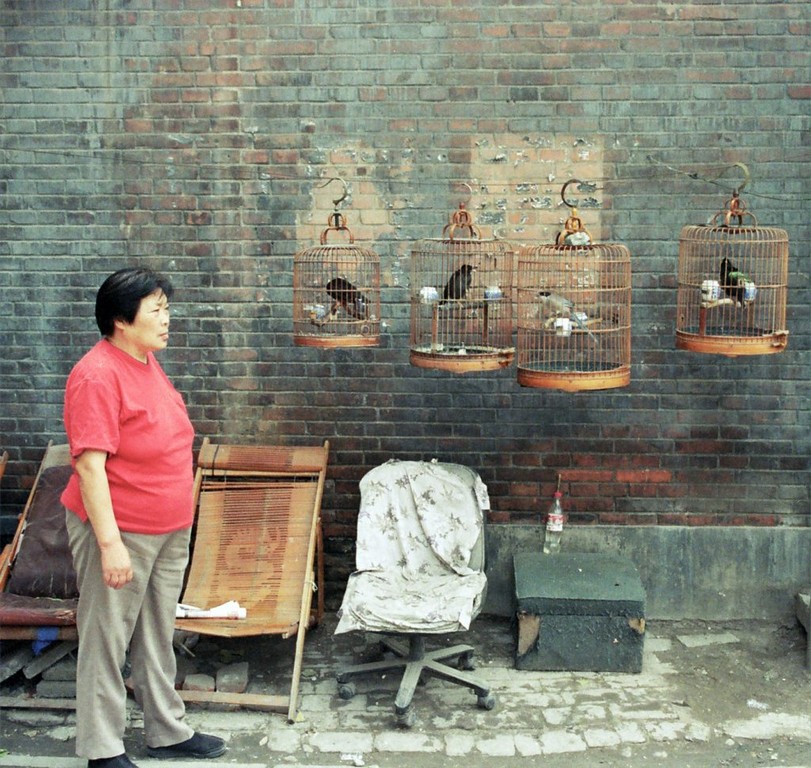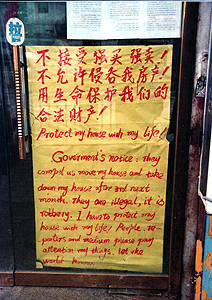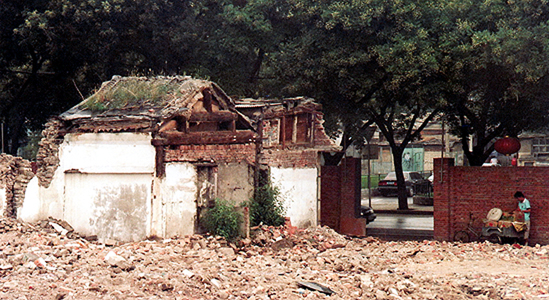Try this French Site for a virtual view of the Forbidden City in Beijing. Looks like Sim City. La cite interdite
Category: Beijing and Around 北京和北京省
Beijing and Around 北京和北京省

Beijing and Around 北京和北京省: China’s capital has changed beyond recognition since we first visited in the winter of 1990.

Despite the changes, I still get a buzz every time I arrive. Many of my favourite haunts have disappeared, but new ones have opened.
For us Beijing is the Beijing of the hutongs. Getting lost and exploring the nooks and crannies of these ancient streets is the highlight of any visit to Beijing. Every visit, despite the constant encoaching development, we find new hutongs.
Then there are the monuments. Few cities in the world hold such emblematic buildings as the Forbidden City, The Summer Palace and the Temple of Heaven.

Outside Beijing there is the Great Wall. When we arrived in Beijing in 1990, the Mutianyu Section of the Great Wall had just opened to visitors and we had the opportunity to have this section exclusively to ourselves.

While Mutianyu is now a popular section with domestic tourists, there are sections of the wild wall still waiting to be explored less than 100 kilometers outside Beijing.
The end of the landline phone call from a small shop
Wild Mushrooms growing In Beijing
Huanghua Cheng 黄花城 Walking the Wild Wall
Tianning Temple and Pagoda 天宁寺塔
Beijing 1990 – 2007
Up until the 1950s, Beijing was an architectural wonder, an almost perfectly preserved metropolis from the pre-industrial era. Many ancient towns and cities exist around the world, but Beijing was enormous: 62.5 square kilometres (25 square miles) large including lakes, parks, palaces and of course the Forbidden City, the emperor’s home. Surrounded by some of the greatest fortified walls of antiquity, it was a microcosm of ancient China, a city that symbolized the political and religious ideals of a system that had existed for twenty – five hundred years. Ian Johnson, Wild grass, p. 101
Part One- Beijing 1990
Stepping out onto the concourse outside Beijing railway station into the sharp winter sunlight we saw the number 20 bus pulling in. “That’s the one!” I shouted to Margie. We stormed it with the rest of Beijing. The descending passengers didn’t stand a chance as the mob rushed the opening doors. I tried to use my backpack to annihilate any opposition in my quest to get a seat. However, despite my efforts, the old ladies with their jabbing elbows still managed to get on before us. But we did get our bums on those precious seats in the end. Two foreign tourists getting off the bus looked at us in total shock and disgust. But, hey, we had already been out in Western China for 2 months, and when in Rome… Welcome to Beijing 1990.
It’s a long time ago, but Margie kept a diary, so the memories come flooding back every time we reread it. I remember a cold, hazy city. The sun, though occasionally glaring, was more often weak and blotted out by a polluted sky (worse than now). When the clouds covered the sky, snow sometimes fluttered in the air, but mostly melted before it had time to settle. The people looked pretty poor, though there were some inklings of an incipient urban sophistication we hadn’t seen elsewhere in China. Something was happening but we couldn’t quite put our fingers on it…..
For more go to: HolaChina: Your Gateway to China
Beijing: Evictions, Hutong Demolition and the 2008 Olympics
COHRE ( COHRE – Centre On Housing Rights and Evictions) claims that the Beijing Municipality has forcefully evicted more than a one and a quarter million Beijing residents to make way for the Olympic Games in 2008.
“The Beijing Municipality and BOCOG have violated the housing rights of over 1.25 million residents of Beijing in pursuit of relentless economic growth, including the hosting of international showpieces such as the Olympic Games. The mass displacements and evictions implemented in Beijing are a clear case of the illegitimate use of evictions as a tool of development by the Beijing Municipality and BOCOG, in a bid to transform the city into a ‘world-class metropolis’ fit to host the ‘best Olympic Games ever.’ Despite courageous protests inside China, and condemnation by many international human rights organisations, the Beijing Municipality and BOCOG have persisted with these evictions and displacements. COHRE’s research has shown how the awarding of the Olympic bid to Beijing by the IOC has been used as a pretext to ride roughshod over rights of affected residents,”.
COHRE – Centre On Housing Rights and Evictions

Apart from the forced evictions it should also be noted that hundreds, if not thousands of Beijing’s historic hutongs (old streets and home to the traditional courtyard houses), palaces and temples that have been reduced to rubble in order to be replaced by wide featureless avenues, souless shopping centres and a an opera house that locals call the Rotten Egg.

Enjoy The Games!
BOOKS OF THE TIMES; Viewing China From the West and From Within – New York Times



